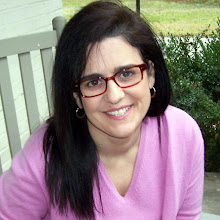FAMILY ASSISTANCE CENTER HELPING REUNITE FAMILIES
The Hurricane Family Assistance Center (1-866-326-9393) assists people who may have lost family members during Hurricanes Katrina, Rita, and Wilma.
What is the Family Assistance Center?
The Family Assistance Center (FAC) is the national collection point for information on missing family members or those who may have perished in Hurricanes Katrina, Rita or Wilma. The center seeks to reunite families and to help locate and recover the remains of loved ones. The Family Assistance Center is a joint effort between the State of Louisiana, the U.S. Department of Homeland Security’s Federal Emergency Management Agency (FEMA) and the U.S. Department of Health & Human Services (HHS). The Center was established using best practices from global disasters and emergencies The FAC includes forensic and mortuary experts, chaplains, mental health and other professionals who can help families during the search. Since opening Sept. 7, the FAC has helped reunite thousands of families.
Who should call the Family Assistance Center?
Anyone with a missing family member who may have been displaced by the hurricanes can call 1-866-326-9393, from 7:00 am to 11:00 pm CST, seven days a week.
How can the Family Assistance Center help you find your relative?
Callers to the FAC are asked to provide any available information about their loved ones, including a physical description, doctors’ and dentists’ names, a medical history, dental work, joint replacements and unique characteristics such as tattoos, scars or birthmarks. Dental records can be especially valuable in identifying the deceased. If or when dental records are needed, family members may be asked to authorize their release to the appropriate authorities for proper identification. Health professionals, staff and volunteers at the call center are trained to provide sensitive, confidential assistance. With this information, the Call Center can:
• Coordinate with other organizations. The FAC works with other organizations, such as the Red Cross, the National Center for Missing and Exploited Children, State Patrol, and others to find missing persons.
– MORE –
• Search databases. The FAC has access to sophisticated software capable of performing complex matching of data through several databases to help locate and identify missing individuals and to reunite them with family.
• Gather forensic information. The FAC works closely with the St. Gabriel morgue to identify the remains of those who died during Hurricanes Katrina and Rita but have not been identified.
Does FAC share the information you give them with anyone else?
All information gathered by the volunteers and professionals will be held in the strictest confidence for the purpose of identifying and reuniting family members only.
What happens when your loved one is found?
When a missing survivor is found, the FAC works to reunite them with family. When a deceased relative is located, the FAC helps family members coordinate funeral arrangements once the local coroner has released the body.
What other services does the Family Assistance Center provide?
Mental health counseling is available to disaster victims and their families.
What is the Find Family National Call Center?
The Find Family National Call Center is a part of the Family Assistance Center providing a toll-free number for people to call for assistance in locating missing relatives.

